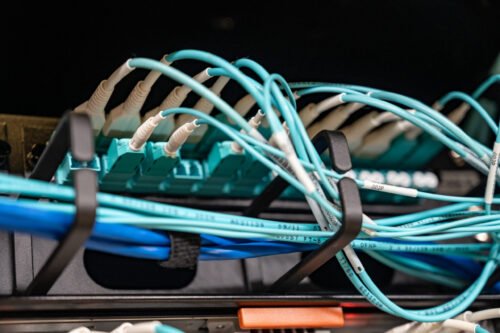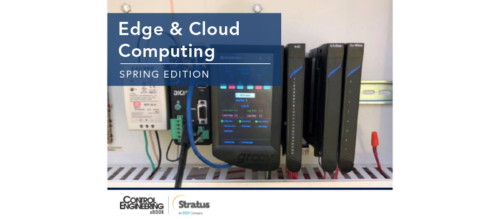ESC 2006 is in the record books
"Embedded Systems Conference (ESC) is now "old enough to vote, soon old enough to drink," was an introductory remark at the keynote presentation of this high-tech event catering to the needs of embedded systems developers and engineers. Indeed, ESC has come of age as it completed its 18th annual presentation, April 3-7, 2006, at the McEnery Convention Center in San Jose, CA.
” Embedded Systems Conference (ESC) is now “old enough to vote, soon old enough to drink,” was an introductory remark at the keynote presentation of this high-tech event catering to the needs of embedded systems developers and engineers. Indeed, ESC has come of age as it completed its 18th annual presentation, April 3-7, 2006, at the McEnery Convention Center in San Jose, CA. After some years of running in San Francisco, ESC has returned to a Silicon Valley location. Product highlights from the show are provided below from Green Hills Software, Texas Instruments, and WinSystems—along with links to their Web sites for more information.
Approximately 350 companies participated in the exhibition part of ESC Silicon Valley 2006, including about 70 “overflow” exhibitors located in spaces outside the main hall. On the conference side of the event, 290 technology sessions, classes, and tutorials awaited an eager audience seeking the latest know-how for their professional lives. Approximately 10,000 visitors attended ESC 2006, according to interim figures.
Event keynoter on April 4 was Dean Kamen, entrepreneur, technology advocate, and inventor of the Segway Human Transporter—among other accomplishments. He spoke on the timely topic of “Innovation: Rude Realities and Realistic Suggestions.” Product innovation requires an unconventional development schedule, explained Kamen. True innovation follows a torturous, convoluted (nonlinear) path involving euphoria, disappointment, surprise—and even a dash of the miraculous.
Here’s a sampling of show product highlights.
Green Hills Software’s Time Machine lets users visualize and replay software execution to quickly catch bugs and other programming inefficiencies.
Green Hills Software Inc . (GHS) had two major introductions at ESC 2006: real-time operating system (RTOS) microkernel, addressing low-cost, deeply embedded applications; and new data collection methods for Time Machine , a tool suite whose attributes include stepping backward to catch elusive programming bugs.
The latest addition to its Integrity RTOS family,mid level) and Integrity (high-end) systems. Available now for ARM, IBM PowerPC, and Freescale ColdFire microprocessors (MPUs); support for other MPUs is coming later. Royalty-free licensing for µ-VelOSity starts at $9,500.
Time Machine now incorporates two ways to collect data and trace bugs-for processors that don’t have built-in trace capability. TraceEdge-PCI lets users collect data via a PCI adapter card and GHS’ SuperTrace probe, explains Kleidermacher, while In-Memory TimeMachine allows the collection of data directly in embedded system memory without the need for added hardware or custom adapters. Time Machine also provides performance analysis alongside its debug capability, Kleidermacher told Control Engineering .
The new data collection methods are available now for all PowerPC and MIPS processors; support for additional processors is in the works.
Texas Instruments Inc . announced a new buck-boost power management chip (integrated circuit) designed to extend battery life in various Li-Ion powered devices. Named TPS6300, the dc/dc converter reportedly delivers 96% peak efficiency at its optimum input voltage range of around 3.3-4 V—and nearly such high efficiencies over its wide overall input range of 1.8-5.5 V. It generates up to 1.2 A. “However, the chip goes across the board to non-battery powered applications as well,” says Dave Freeman, system engineering manager, Analog & Digital Power Control Products at TI.
TPS6300 uses synchronous rectification, based on a fixed-frequency (1.5 MHz) PWM method, to hold its high efficiency levels over the wide voltage range. Wide input voltage design anticipates the requirements for future batteries, explains Douglas Phillips, product marketing manager at TI’s Portable Power Management unit. The chip is said to provide up to 28% longer run-time than a standard high-efficiency buck converter with 3.3-V output.
TPS6300 is available in a 3 x 3 mm quad flat, no-lead (QFN) package at suggested retail pricing of $2.75 in 1,000-piece quantities.
WinSystems’ PCM-MIO is compatible with isolated signal conditioners to protect, filter, and isolate the board’s analog input and output signals from electrical transients.
WinSystems introduced a PC/104-compliant, high-density analog and digital I/O board that operates in the -40 to 85 °C temperature range. Measurements are reportedly monotonic, and there are no missing codes over this temperature range. Named PCM-MIO, the board includes a 16-channel/12-bit analog-to-digital (A/D) converter, 8-channel/12-bit digital-to-analog (D/A) converter, and 48 lines of digital I/O access. Since the lines are TTL-compatible and can source/sink 12 mA, they can directly connect to industry-standard, optically isolated ac/dc signal conditioners. The board also is available with 16-bit A/D converters.
No onboard trimpots (potentiometers) are needed to calibrate the analog circuitry within its specifications, which Robert Burckle, WinSystems vice president, calls unique to PCM-MIO’s design. Ultra-low-noise power supplies and a low-drift voltage reference in the board’s analog section ensure accurate signal measurements up to 16-bit resolution.
The board has identical input and output voltage ranges of 0-5,
List pricing for the PCM-MIO-12 model is $395 with delivery stock to 3 weeks.
For more on ESC 2006, also see Control Engineering April 6, 2006, Daily News .
—Frank J. Bartos, executive editor, Control Engineering fbartos@reedbusiness.com
Do you have experience and expertise with the topics mentioned in this content? You should consider contributing to our CFE Media editorial team and getting the recognition you and your company deserve. Click here to start this process.





